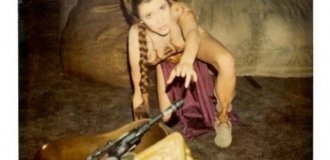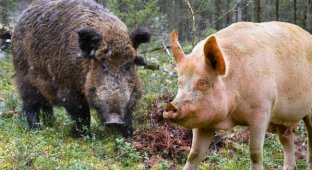Production of English furniture (71 photos)
One blogger told us how English furniture is made and what material it is made from.

To put it in a nutshell: very simple. Having delved into the process, everything seems logical and understandable, but in reality there are many nuances. I would divide production into three stages. The first stage is the selection of material. Oak is a classic in the manufacture of English furniture. This tree has several properties that distinguish it from other species - oak is hard, dense, and does not rot. It also burns poorly, lends itself well to artificial aging, and has a barrel thick enough to make solid parts from it.

Some advantages of oak are automatically transformed into its disadvantages: oak wood is incredibly heavy in mass and difficult to machine. Accordingly, tools for working with this wood must be strong and wear-resistant. The British buy wood from Normandy, still at the growth stage. It’s hard for me to imagine how rich the northern coast of France is in oak, but in England itself this tree is found at almost every turn. Perhaps this choice is based on a caring attitude towards one’s nature, or perhaps banal practicality.
The felled and sawn material is delivered to England, where it is dried in the open air for 5-10 years. This period of time is considered optimal for removing residual stress in the wood and removing moisture.

Boards and beams are sorted by width/thickness/length. Already at this stage their fate is determined - who will become the leg and who will become the tabletop.
Immediately before cutting, the wood settles for several days in a drying chamber.

Sawing shop. There are two circular machines for longitudinal and transverse cutting of wood.

Everything is quite simple: the canvas is cut lengthwise,

then crosswise into equal parts.

Next, the uneven edge is cut off, resulting in a perfectly smooth board. They are immediately re-marked.

Nearby lie quite civil-looking blanks that should be taken to the warehouse.

There are 5-6 people working in this workshop at the same time, each of them doing their part of the work. Worker card-)

Patterns.

There are a lot of machines here, as well as dust, during half an hour of filming it covered all my hair. The hood hums loudly, sucking shavings and sawdust from each machine into special bags on the street. They will later be used to make briquettes for heating, but another company is engaged in this business.


Speaking of machines. They are all from the same company, simple in design, without any digital bells and whistles, sometimes with only two start-stop buttons and a speed controller.

This one adjusts the thickness of the boards.

Grinding machine.

I suspect that some of them are already in their second decade.







In any case, the emphasis is on the worker's hands. Half of the team are rural youth. I think without any special education, since there are no colleges that train professional carpenters here. All experience is adopted from the older generation. Hence the conclusion: fools and slackers do not work here. For the entire time (which is more than three weeks), I did not see, except myself, a single worker hanging around in the yard with a mug of coffee and a cigarette in his teeth. Payment is hourly.




The most interesting process, where oak boards and beams take on their finished form, begins in a nearby building nearby. There is a carpentry shop and a paint shop there.
Slow work is going on in the carpentry. The production process has been precisely calibrated and polished over the years; haste can nullify the work of a dozen people, which can come back to haunt someone’s wallet. Oak that has been resting for 10 years is valuable enough material to easily produce defects from it.


All items are made strictly according to drawings, some have their own characteristics. Here they like to use design ideas for the benefit of the buyer, using non-trivial solutions in transforming furniture and its dual use. I'll talk about this a little later.


Carpenter's tools.


Don't think that absolutely everything is done by hand. Modern tools also save time and nerves.

This machine is used to profile the support leg of the future table.

The fun comes after all the parts are ready for assembly. Before this, each of them is processed mechanically, smoothing the chamfers and edges. This is exclusively handmade, everything should look so imperfect as to create the effect of wood that has been “worn” by time. First, the contour of the future “irregularity” is outlined.

Then a part of the chamfer is roughly removed with a rasp.

The remains of the fiber sticking out in different directions are cut off with this tool.

The plane comes into play. They use it to make the plane of the beam more concave in the center, as if it had been rubbed in this place by thousands of feet.

An experienced eye checks the quality of the work performed.


The final stage is creating potholes and scratches. The operation is performed with a pointed stone directly along the plane of the tree. At first glance, it's a simple job. In fact, oak is not so easily affected by impacts. The marks must remain deep and beautiful in order to sparkle after finishing with varnish.

On the unpainted tabletop, only the grain of the wood is still visible.

They don't shy away from outsourcing here. Figure cutting is performed in another town. Ready-made parts are brought here.

This table leg is carved from solid timber.

The blanks are stored in a warehouse, one floor above.

The parts ready for assembly are in numbered order.




No nails or other metal elements are used during assembly. Only wooden tenons, grooves drilled in certain places and special glue. Everything fits together so tightly that it is impossible to even insert a needle into the joint, and some seams after sanding are not visible to the eye at all.


To ensure that the structural elements are completely glued together and not deformed, while maintaining their trapezoid, they are tightened with clamps. Furniture assembled in this way with an average weight of 50-100 kg is guaranteed to last for decades. I think about 100 years for sure.


Decorative elements, like this drawer border, are also glued on.


This ends the second stage. An unremarkable (more like a chemical laboratory) paint shop receives pristine white furniture, which is destined to emerge as a completely different piece of furniture in color and appearance.


Now about the final stage, which is carried out by the polisher - a human wizard who transforms fresh oak into furniture that breathes antiquity, as if it came like this from Tudor times. Actually, the general style and, in part, the production technology of this furniture were taken from there. And they call it that because during the time of the six-wife Henry VIII Tudor, massive carved beds and tables made of oak became traditional in the aristocratic houses of England.
Staining is a means of primary wood processing. When applied, the contrast sharply increases. Due to its heterogeneity, the pattern of wood fiber appears. The tree becomes much more beautiful.


To enhance the effect, the furniture is additionally coated with a special patina. It is applied to edges and joints, creating the effect of unevenly faded furniture. Varnished in two stages. First, the so-called “pile” is raised - wood particles swollen as a result of staining and washing. Then this layer is removed by sanding and for better shine and water resistance, it is coated in several layers with a multi-component varnish.
I was convinced of the strength of the varnish coating personally by accidentally hitting the table leg a couple of times with a tripod. Shellac gives the furniture its characteristic amber color. This is a finishing varnish created on the basis of resin, which is produced from the secretions of varnish bugs. Shellac is applied delicately, soaking all parts with a small swab. It turns out something like this beauty.



Now about the chips. I have already said that this furniture is made wisely. Many items are collected, saving living space. Here, for example, are tea tables.

And this is a coffee table that, with a slight movement of the hand, turns into a bedside table.

There are also features such as hidden internal cavities, like in this secretary. The board is pulled out by pressing a special flat key into a certain place.

Or a compartment for papers disguised as a decorative panel. It is removed by removing a small bolt from the inside.

All this can be viewed right there; the showroom is located on the second floor.

The furniture is divided into collections and stylized according to the historical eras of England. But there are also such, quite modern trends.


Of course, the reader will have a reasonable question: “How much does it cost?” Prices for small items, such as a bedside table, start in the three figures in pounds. Not everyone can afford to furnish their home with such furniture. But it's worth it!

Source: arshambo





















